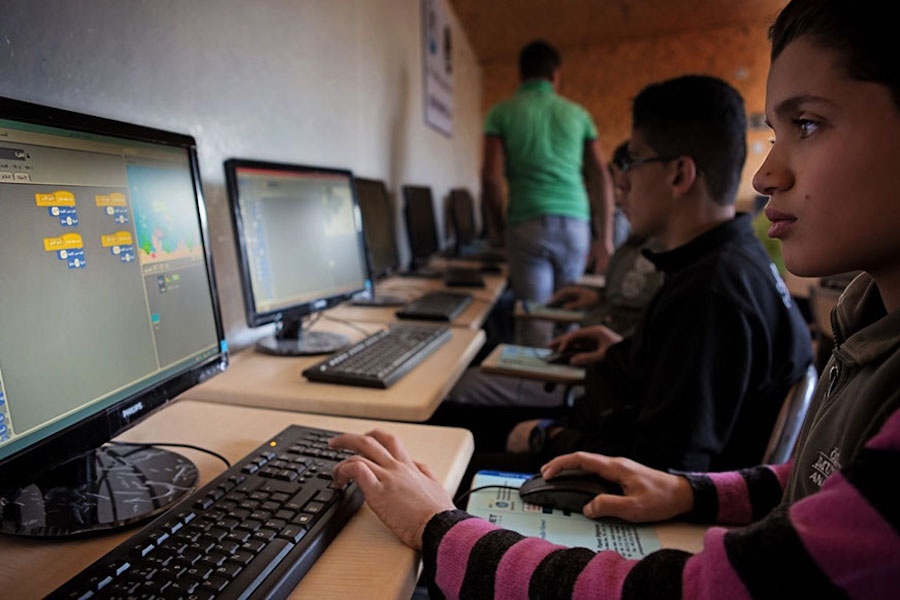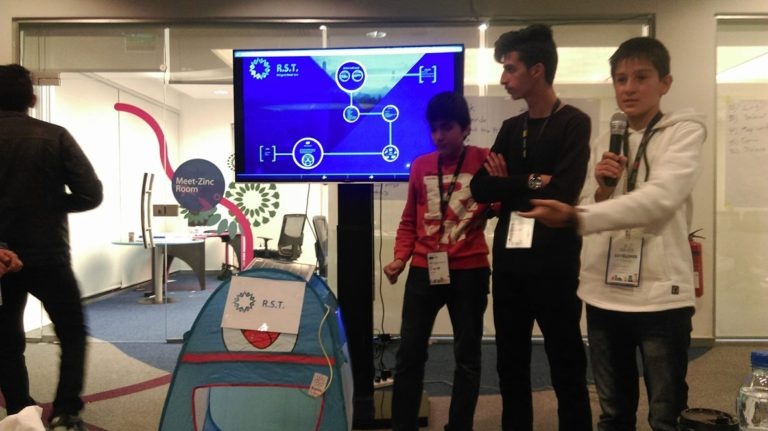In MENA’s booming tech scene, where do humanitarian startups stand?

The MENA region, frequently characterized by uncertainty, political polarization and slow socioeconomic progress is seeing a stunning technological evolution.
Technologies developed by entrepreneurs in the region are on par with those of the world’s most advanced nations. But with the high economic costs of unprecedented humanitarian challenges unlikely to dissipate anytime soon, the underlying question is: why do we not see more humanitarian-focused tech innovations in the market?
Political turmoil = humanitarian crises = another feature of MENA
Grim developments – intensified sectarian clashes, the rise of armed militants and the raging wars in Syria, Yemen and Libya – have further destabilized already struggling societies and economies.
The long-term infrastructure damage is directly affecting health, education, water and energy sectors across the region; the World Bank’s latest Quarterly Economic Brief reported that restoring Libya’s infrastructure will cost around $200 billion over the next 10 years, and the total damage for six Syrian cities is estimated to be around $4.5 billion.
Undoubtedly, the war in Syria has regional implications, particularly for bordering refugee host countries such as Jordan and Lebanon, whose economies are already constrained. Aside from deep budgetary pressures, inflation and fiscal challenges, the impact of the refugee influx on labor markets has been another substantial issue of concern and dispute for MENA countries, where youth unemployment rates are the highest in the world.
Europe’s tech response is an example to watch
Aside from Europe’s controversial response to the 2015 refugee influx, is a technology movement addressing the crisis by providing support for the asylum process and integration of refugees.
Inspired by the public outrage expressed over the death of three-year-old Syrian boy Alan Kurdi on social media, Mike Butcher, TechCrunch’s editor-at-large, founded Techfugees, a social enterprise coordinating the international tech community’s response to the needs of refugees. Its creation quickly resulted in a global network of tech entrepreneurs.

Other examples include Infoaid, an app for refugees traveling through southeast Europe with up-to-date information on border, transport and weather conditions as well as security advice; CALM, the UN and SINGA 2015 hackathon winner, matches poorly housed and homeless refugees with families willing to open their homes; Moni digital debit and pre-paid cards have allowed over 4,000 refugees who are denied bank accounts to receive government allowances; and winner of The Europas 2016 humanitarian tech of the year award, Meshpoint, is a portable device designed to withstand extreme conditions and provide reliable internet access for up to 150 simultaneous users.
These digital tools underscore the importance of practical connectivity as a low-cost tech need when people are living in harrowing conditions.
Integrating technology and connectivity with humanitarian action
In MENA, aside from initiatives such as 3D MENA and Refugee Open Ware, it is predominantly the UN agencies and international relief organizations that are incorporating technology with refugee assistance.
Iris scanning technology is among the latest developments. The UN Refugee Agency (UNHCR) uses UK-founded company Irisguard to securely register millions of cross-country refugees. Along with the UN World Food Programme, the agency also uses the technology to distribute aid in the form of Biometric Cash Assistance (BAC), which is an iris scan payment system that efficiently enables refugees living in camps to purchase food and other basic items in a dignified way.
Iris scanning identity verification is now the standard method for withdrawing cash assistance in the camps, making Jordan the first country in the world to use this kind of technology for refugee assistance.

Connectivity remains essential in responding to humanitarian crises of any type. Aid is no longer limited to shelter, food, water and medicine. The exchange of information through technology serves as a powerful and effective tool of providing aid to those in need.
“Humanitarian emergencies require fast intervention and effective coordination for responders to act,” said Karén Barsamian, head of operations for the Fast Information Technology and Telecommunications Emergency and Support Team (FITTEST), a division of the UN World Food Programme based in Dubai.
“But who is the first responder? It is the affected people who best know their own immediate needs; they are our primary source of information,” he said. Through FITTEST's IT platform they can collect information about living conditions and patterns useful to the delivery of specifically needed aid items and basic services. Barsamian said they were also able to support inter-agency coordination. “Without connectivity, there is nothing.”
Because of its comprehensive IT services, FITTEST is a first responder to humanitarian emergencies, ready to deploy within 48 hours of a crisis. Needless to say, technology is transforming the face of humanitarian action for both aid providers and affected communities.

Elsewhere in MENA, non-emergency crises such as poverty, food insecurity and water and sanitation issues subsist and are widespread. Despite multilateral and government-led development programs, the scale of these issues is increasing.
A hotbed for tech startups
The 2009 acquisition of Maktoob by Yahoo was nothing short of a breakthrough for entrepreneurs in the Arab region, as it altered the technology landscape and bolstered credibility. The following years have brought about significant growth across MENA, with several tech startups valued at over $100 million each today. In 2016 alone more than $800 million was invested in startups in the region. The success of companies like Uber competitor Careem, ecommerce giant Souq.com, and Silicon Valley-backed Fetchr, among others, put MENA on the map as a hub for tech startups and entrepreneurs.
Still, there is a fence surrounding impact-based product development.
The ball and chain of tech entrepreneurs
Outdated practices and bureaucratic policies are holding tech entrepreneurs in the region back.
Government red tape such as legal roadblocks, rigid ownership structures and high fees for licensing and registration, are a deep-rooted regional and cultural matter for which policy reforms are necessary. Until that is achieved, inflexibility persists.
Access to capital and resources, particularly for young entrepreneurs, is another frequently encountered obstacle. According to IFC, nearly 63 percent of the MSMEs in MENA do not have access to finance.
Add to these factors the political turmoil deterring outside investors, and the result is a 50-pound ball and chain attached to the leg of an entrepreneur, and an even heavier one for when return-on-investment comes in the form of humanitarian solutions.
Investment is the first and foremost aspect in startup risk assessment. “Investors tend to look for solid returns on their investments and are not necessarily acquainted with venture capital in the region,” said Samih Toukan, chairman of Jabbar and cofounder of Maktoob and Souq.com. “This culture is changing, and after the Maktoob/Yahoo story we saw more venture investment into start-ups that proved successful, and will continue seeing more investment flowing in. However, when it comes to social and humanitarian causes, we see less interest from investors which probably stems from an unclear return on investment."
Toukan said that in terms of capital, humanitarian-focused tech ventures had the same needs, if not greater, than those of for-profit ventures since the revenue model was more ambiguous. The solution? “If the initiative is sustainable and can generate revenue, it is more likely to attract investment. And in order attract investment from private and non-private organizations, a greater focus on education and lobbying is needed to emphasize the importance of using technology to solve humanitarian and social problems in our region.”
Kenya’s M-Pesa is an example, where mobile banking technology lifted hundreds of thousands from poverty and significantly contributed to Kenya’s economic growth, all while turning a profit. This is an ideal case where return on investment is two-dimensional.
All it takes is one successful humanitarian-focused tech startup to kick start an entire wave. There are steep hills to climb, but the demand exists, and it exists among the region’s most vulnerable.


